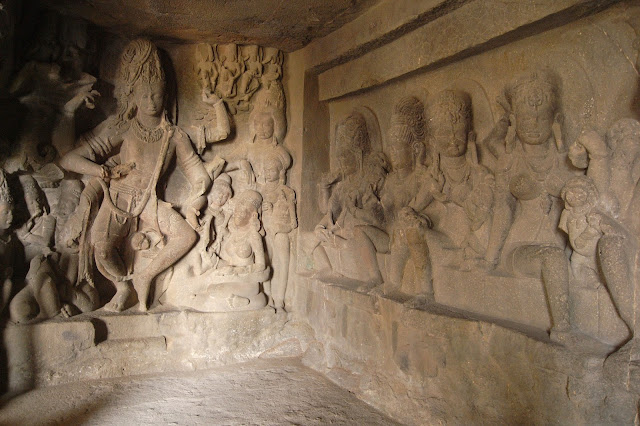The Attara Katcheri building originally housed the Secretariat of the Mysore kingdom, before the Vidhana Soudha building came into being. From 1956 onwards, the Attara Katcheri is being used as the Karnataka High Court Building.
I clicked this photo of a lady who alighted from an auto and was walking towards the building; probably an employee:
 |
| This is one of the entry gates to Attara Katcheri. |
Attara Katcheri (Eighteen Departments) refers to the division of administrative departments into 18 specialised parts. Each part is called a chavadi or a katcheri, both words mean 'public assembly', referring to traditional systems of gathering together to discuss public matters.
The division into 18 administrative departments was originally done in Mysore by Chikkadevaraja Wodeyar in the early 1700's, in a manner similar to that followed in the Mughal court. The word Attara is not of Mysore origin; it is a corruption of the Hindustani / Khariboli word atthaarah.
The system of administering the kingdom through these 18 departments was followed during Tipu’s reign as well as during the subsequent British reign. While Tipu ruled from Srirangapatana, and the Wodeyars from Mysore, the British wanted to bring the seat of administration to Bangalore, close to their own cantonment. Therefore the Attara Katcheri building was commissioned in the mid-1800's.
It was designed by Major Gen Richard Hieram Sankey, the Chief Engineer of the Mysore government. He picked what is called the Graeco-Roman style, and you can see how he has used Greek temple and public building architecture concepts, such as columns and pediments.
 |
| High Court by http://en.wikipedia.org/wiki/User:Muhammad_Mahdi_Karim |
The Attara Katcheri was completed in 1869 by the construction company of Arcot Narayanswamy Mudaliar and Rai Bahadur Bansilal Ramnathan. The public offices included the revenue collection arm, the secretariat, the judiciary and several others.
In 1956, when the Vidhana Soudha building was constructed, the Mysore High Court occupied the entire Attara Kacheri building. In 1973, the Mysore state was renamed as Karnataka, so Attara Katcheri is now the High Court of Karnataka.
In 1956, when the Vidhana Soudha building was constructed, the Mysore High Court occupied the entire Attara Kacheri building. In 1973, the Mysore state was renamed as Karnataka, so Attara Katcheri is now the High Court of Karnataka.


















